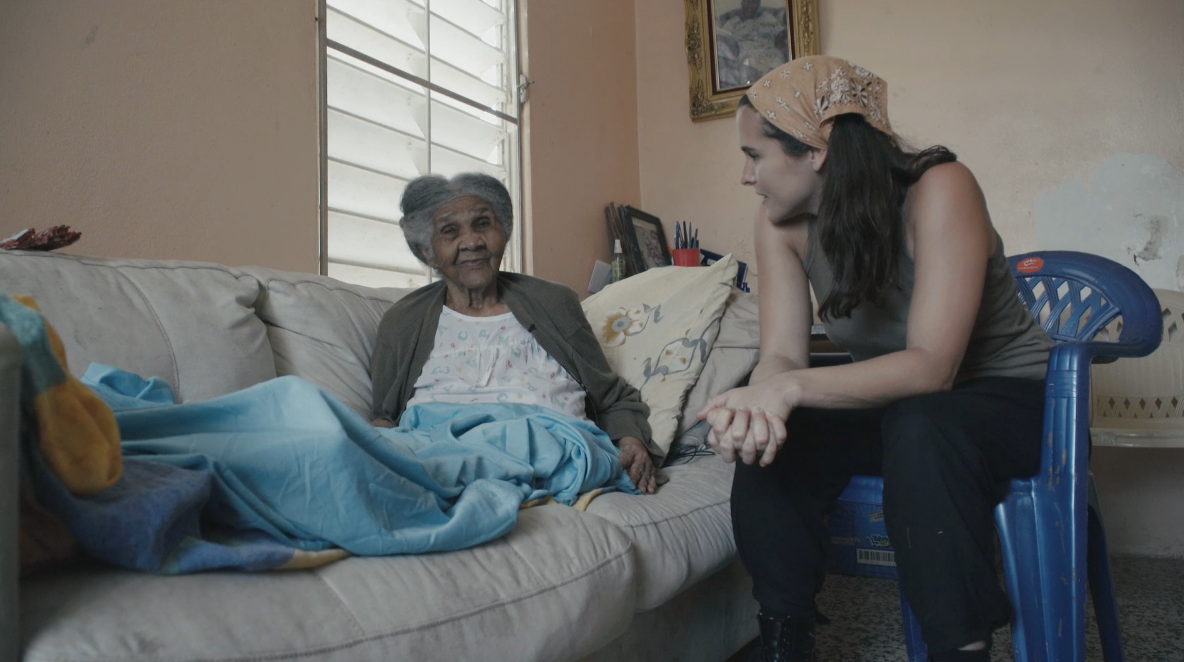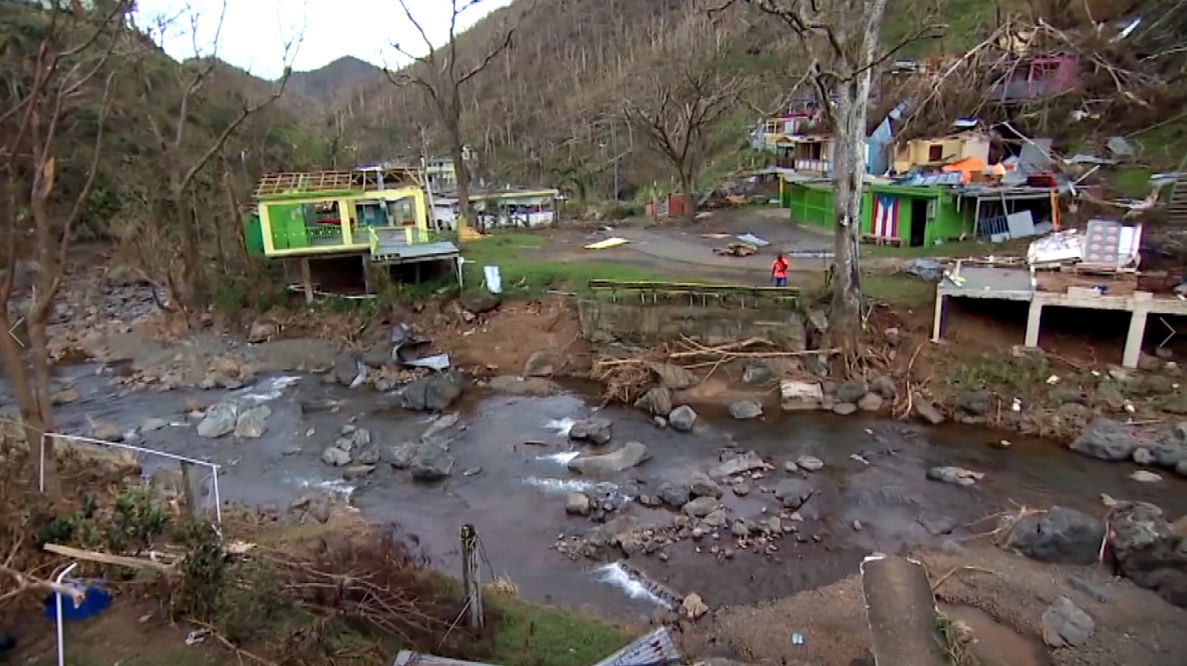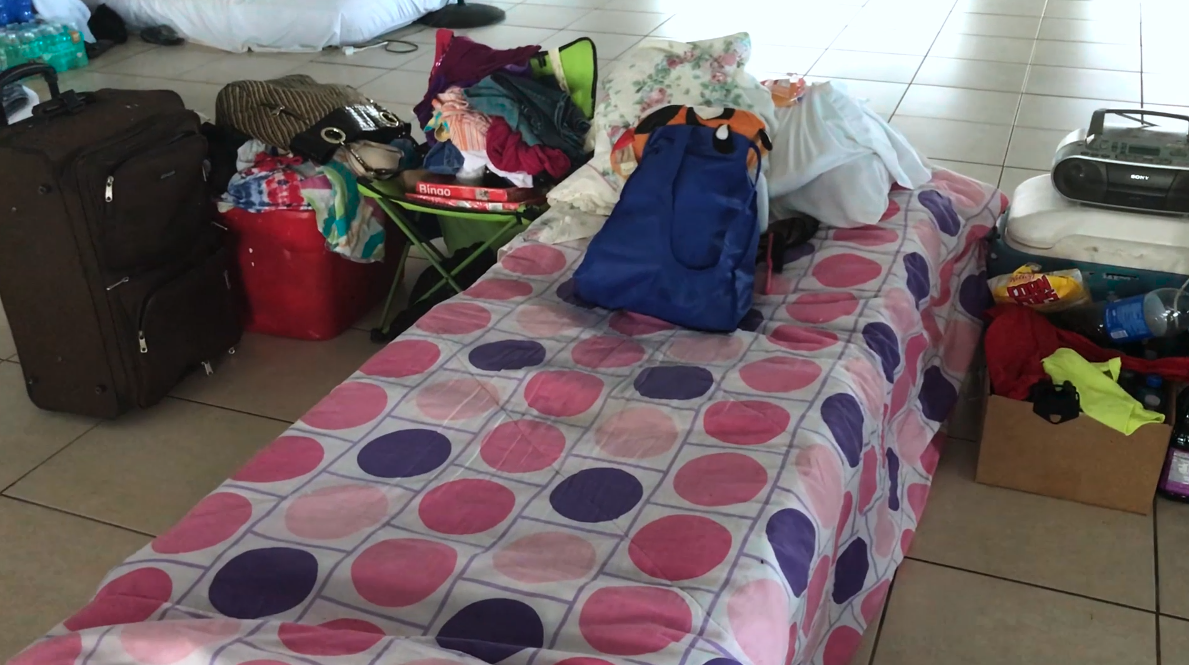At 98-years-old, Felicita still remembers Hurricane San Felipe in 1928 and San Ciprianin 1936. They stood out as the deadliest in Puerto Rico's recorded History.
Felicita says Maria was worse.
"The strongest one was this one, that just passed."

We visited between Toa Alta and Toa Baja, where the highest death toll occurred.
The town of Toa Baja was caught between river flooding from the La Plata Dam and the storm surge from the ocean further north.
The mayor reported that eight people drowned and another two thousand were rescued from their homes according to Governor Pedro Rossello.
"Water kept rising and rising," said Felicita. "There was nothing to do. I lost everything because it rose too high and I live on a lower level."

"Literally, the kayak would pass over the electric cables," explained Luis Daniel "D.Ozi" Otero. "We were practically on our own."
D.Ozi explained that there was flooding from the ocean on one side and the river on the other. A mix of freshwater and saltwater fish swimming along.
D.Ozi is a famous Puerto Rican rap producer. He has lived his whole life in El Ingenio. When he realized the water was continuing to rise, he found a neighbor with a boat and rushed to rescue his great grandmother.
In the days that followed the storm, the water remained stagnant. Animal corpses were rotting and people were hungry.

D.Ozi posted a video to raise awareness and when days and weeks passed with no sign of FEMA, he reached out to the only non profit he knew -- though Buena Vibra was a foundation for the arts.
“So he went to our office with a video - you need to see this, what's going on in my neighborhood," said Emil Medina, creative director of the Buena Vibra Foundation. "It was impressive. We saw all the people crying, taking away their stuff. I was so impressed."
It had already been two weeks since Maria. At two and half months, we saw FEMA contractors cleaning up debris and installing some blue tarps on houses that had lost their rooftops -- But Emil and his colleague Celso explained that they had just recently started to come around.
"They came today - and today as I'm finding out right now they are putting the famous tents on the roof," said Architect Celso Gonzalez. "Finally they are here."

Next we spoke to Marta. She spent the hurricane in a shelter and returned three days later to find her home completely flooded.
"There I was feeling ok, but when I came back here... I almost died," explained Marta. "Because the water rose six feet above my house. it was a total loss. Everything, everything, everything. Stove, refrigerator, washing machine, everything."
When FEMA contractors finally came to Marta's home, she says she was too proud to ask for any help. She refused the blue roof willing to give up saving the second story of the house, but her daughter caught up with them and accepted the blue tarp.
“Marta says I don't need two houses, I don't need the second floor," explained neighbor Mata Agosto. "All I want is to save this roof”

Marta's house has holes where mice and rats can get in, leaks that could threaten the roof and humidity that could accumulate hazardous mold. The blue roof doesn't seem like the most essential thing she needs -- but her daughter was told refusing the tent means refusing FEMA help altogether
However, FEMA says that isn't the case. These kinds of confusions have created tensions among neighbors.
A few blocks away, at a nearby shelter, around 30 people who lost their homes were still waiting for answers. As we were driving in, a large convoy was also driving in.

We were told it was the deputy director of HUD doing a reconnaissance tour. She wouldn't talk to us and only stayed for around 5 to 10 minutes, but it gave some people hope their situation would soon change.
Diego Padilla Castro's home collapsed. When we spoke to him he was still waiting for the $500 advance FEMA is giving many hurricane victims. He had been approved to move public housing two weeks prior, but he was still waiting for an address transfer on his official documents.
"I don't have the things that I lost. But, pa'alante... Moving forward."
There was a lot of confusion around the shelter. Some of the people who were there within the first few days received some kind of funding and then those who remained said they didn't know what the difference was. Some believed it just depended on the inspector, they waited patiently to see what options they had.

To get some answers we went to a FEMA emergency center.
In the days following the storm FEMA was heavily criticized for hoarding supplies and taking too long to reach areas in crisis. A scandal of a $30M contract FEMA awarded an unproven company in Florida which failed to deliver half a million tarps presented delays and invited criticism.
We asked FEMA Incident Management Assistance Team Leader Tom Fargione how someone who lost their home or lost part of their home requests help from FEMA.
"Well first of all you've got to register and that is important we keep emphasizing the fact that people need to register to get into the system," said Fergione.
Once people register, something that was impossible to many people within the first few days and even weeks after Maria -- given road closures and power and communication outages -- there are a series of options including grants, public housing, rental assistance, even relocation to the US and loans.
FEMA refers people who don't qualify immediately for grants to The U.S. Small Business Administration where they can get special loans to rebuild their homes and businesses.

According to an agency spokesperson, SBA encourages people to apply for the SBA loans because if they don't qualify, SBA would send them back to FEMA and then they might qualify for FEMA grants.
Despite offering better conditions than a traditional loan, many people are afraid of borrowing, so they don't apply.
That's were so many nonprofits and community organizing is stepping in.
As we toured the island -- we met many people like the Buena Vibra folks, the community at el Caño Martin Peña, and hundreds of initiatives around the island who are not sitting idly waiting for the bureaucracy of the federal, state or municipal institutions. They were instead lifting Puerto Rico with their bare hands and creating with that strength a new paradigm.
"There are things the U.S. can do for us and there are things the U.S. can't do," said Medina. "We can only do so much, we can only repair so much, but what the people here are doing is remarkable, truly is, it's inspiring."
Fargione with FEMA said the passion of the Puerto Rican people is what motivates the workers every day.
"The thing that I have found most heartening here is the resiliency," said Fargione. "Of the people of PR - wherever they love, their sense of community their willingness to come together, their willingness to help each other and it is something that I have not seen much to this degree, and that helps invigorate us to keep us moving."

